-
 Bitcoin
Bitcoin $116700
0.48% -
 Ethereum
Ethereum $4213
6.27% -
 XRP
XRP $3.280
1.22% -
 Tether USDt
Tether USDt $1.000
0.02% -
 BNB
BNB $805.1
2.46% -
 Solana
Solana $180.2
2.65% -
 USDC
USDC $0.0000
0.02% -
 Dogecoin
Dogecoin $0.2412
8.50% -
 TRON
TRON $0.3356
-1.11% -
 Cardano
Cardano $0.8108
3.59% -
 Hyperliquid
Hyperliquid $43.89
8.53% -
 Chainlink
Chainlink $21.15
10.75% -
 Stellar
Stellar $0.4502
1.41% -
 Sui
Sui $3.935
4.69% -
 Bitcoin Cash
Bitcoin Cash $570.7
-1.75% -
 Hedera
Hedera $0.2636
3.28% -
 Avalanche
Avalanche $24.25
4.48% -
 Ethena USDe
Ethena USDe $1.001
0.03% -
 Litecoin
Litecoin $122.0
-0.08% -
 Toncoin
Toncoin $3.445
2.68% -
 UNUS SED LEO
UNUS SED LEO $8.979
-0.08% -
 Shiba Inu
Shiba Inu $0.00001379
6.73% -
 Uniswap
Uniswap $10.91
2.00% -
 Polkadot
Polkadot $4.106
5.39% -
 Dai
Dai $1.000
0.02% -
 Pepe
Pepe $0.00001227
9.07% -
 Bitget Token
Bitget Token $4.507
0.72% -
 Cronos
Cronos $0.1576
3.40% -
 Monero
Monero $272.0
-1.68% -
 Ethena
Ethena $0.7502
21.27%
Is it a risk that SHIB's derivatives position is 3 times that of the spot?
SHIB's derivatives position being three times the spot market indicates high speculation, increasing volatility and manipulation risks for holders.
Apr 20, 2025 at 12:35 am
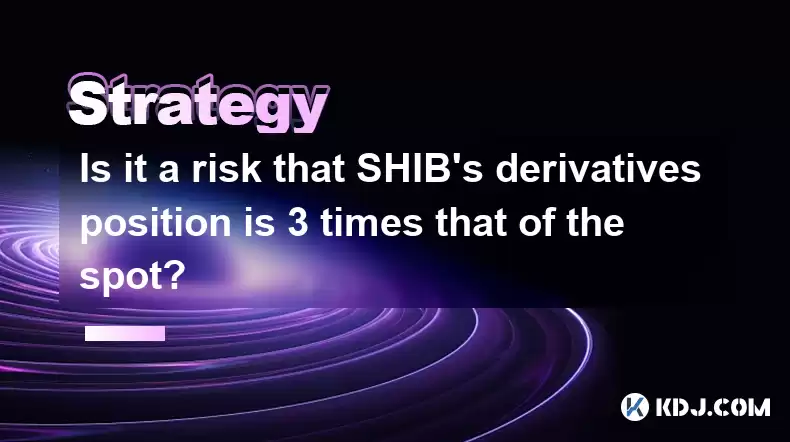
Is it a risk that SHIB's derivatives position is 3 times that of the spot?
The cryptocurrency market is known for its volatility and high-risk nature, and Shiba Inu (SHIB) is no exception. One of the metrics that traders and investors closely monitor is the ratio of derivatives to spot positions. SHIB's derivatives position being three times that of the spot market is a significant indicator that warrants a deeper analysis. This article will explore the potential risks associated with this phenomenon and provide a detailed understanding of what it means for SHIB holders.
Understanding Derivatives and Spot Markets
Before delving into the risks, it's essential to understand the difference between derivatives and spot markets. The spot market involves the immediate exchange of assets at the current market price. In contrast, derivatives are financial instruments that derive their value from an underlying asset, such as SHIB. Derivatives include futures, options, and swaps, and they allow traders to speculate on the future price movements of SHIB without owning the actual cryptocurrency.
The Implication of a High Derivatives-to-Spot Ratio
When the derivatives position of SHIB is three times that of the spot market, it suggests a high level of speculative activity. A high derivatives-to-spot ratio can indicate that traders are heavily betting on the future price movements of SHIB, which can lead to increased volatility. This is because derivatives can amplify price movements, as traders use leverage to increase their exposure to the market.
Potential Risks for SHIB Holders
For SHIB holders, a derivatives position that is three times the spot market can pose several risks. Firstly, increased volatility can lead to significant price swings, which can be detrimental to long-term holders who are not prepared for such fluctuations. Secondly, the potential for market manipulation increases with a high derivatives-to-spot ratio, as large traders can influence the market through their positions in derivatives.
Impact on Market Liquidity
Another risk associated with a high derivatives-to-spot ratio is the impact on market liquidity. When the derivatives market is significantly larger than the spot market, it can lead to a situation where the spot market lacks the liquidity to absorb large trades. This can result in slippage, where the executed price of a trade differs from the expected price, which can be costly for traders.
Case Studies of Similar Situations
To better understand the risks, it's helpful to look at case studies of other cryptocurrencies that have experienced similar situations. For instance, Bitcoin (BTC) has seen periods where its derivatives market was significantly larger than its spot market, leading to increased volatility and market manipulation concerns. Similarly, Ethereum (ETH) has experienced high derivatives-to-spot ratios, which have contributed to sharp price movements.
Strategies for Mitigating Risks
Given the potential risks associated with SHIB's high derivatives-to-spot ratio, it's crucial for investors to adopt strategies to mitigate these risks. Diversification is a key strategy, as it allows investors to spread their risk across different assets. Using stop-loss orders can help limit potential losses by automatically selling SHIB if the price falls below a certain level. Staying informed about market developments and understanding the dynamics of the derivatives market can also help investors make more informed decisions.
The Role of Market Sentiment
Market sentiment plays a significant role in the dynamics of the derivatives market. When traders are bullish on SHIB, they are more likely to take long positions in derivatives, which can drive up the derivatives-to-spot ratio. Conversely, when sentiment is bearish, traders may take short positions, which can also contribute to a high derivatives-to-spot ratio. Understanding market sentiment can help investors gauge the potential risks associated with SHIB's derivatives position.
Regulatory Considerations
Regulatory considerations are another factor that can impact the risks associated with SHIB's high derivatives-to-spot ratio. Different jurisdictions have varying regulations regarding cryptocurrency derivatives, which can affect the market dynamics. For instance, in regions with strict regulations, the derivatives market may be smaller, leading to a lower derivatives-to-spot ratio. Conversely, in regions with more lenient regulations, the derivatives market may be larger, contributing to a higher ratio.
The Importance of Risk Management
Effective risk management is crucial for navigating the risks associated with SHIB's high derivatives-to-spot ratio. Setting clear investment goals and understanding one's risk tolerance are essential steps in developing a risk management strategy. Regularly reviewing and adjusting one's portfolio can help ensure that it remains aligned with these goals and risk tolerance. Utilizing risk management tools, such as position sizing and portfolio rebalancing, can also help mitigate the risks associated with a high derivatives-to-spot ratio.
Frequently Asked Questions
Q: How can I monitor the derivatives-to-spot ratio for SHIB?
- You can monitor the derivatives-to-spot ratio for SHIB by using cryptocurrency data platforms such as CoinGlass or Coingeco. These platforms provide real-time data on the open interest in SHIB derivatives and the spot market volume, allowing you to calculate the ratio.
Q: Are there any tools or indicators that can help predict the impact of a high derivatives-to-spot ratio on SHIB's price?
- While no tool can predict market movements with certainty, indicators such as the funding rate in perpetual futures and the open interest in options can provide insights into market sentiment and potential price movements. Additionally, technical analysis tools like the Relative Strength Index (RSI) and Bollinger Bands can help gauge the market's volatility.
Q: How does the derivatives-to-spot ratio affect the overall market sentiment for SHIB?
- A high derivatives-to-spot ratio can indicate strong market sentiment, as it suggests that traders are actively betting on future price movements. However, it can also lead to increased volatility and potential market manipulation, which can negatively impact sentiment if traders become wary of these risks.
Q: Can regulatory changes impact the derivatives-to-spot ratio for SHIB?
- Yes, regulatory changes can significantly impact the derivatives-to-spot ratio for SHIB. Stricter regulations may reduce the size of the derivatives market, leading to a lower ratio, while more lenient regulations can increase the size of the derivatives market, potentially leading to a higher ratio.
Disclaimer:info@kdj.com
The information provided is not trading advice. kdj.com does not assume any responsibility for any investments made based on the information provided in this article. Cryptocurrencies are highly volatile and it is highly recommended that you invest with caution after thorough research!
If you believe that the content used on this website infringes your copyright, please contact us immediately (info@kdj.com) and we will delete it promptly.
- Trump, Crypto Vehicle, and WLFI Tokens: A New York Minute on the Latest Buzz
- 2025-08-10 00:30:12
- Wheat Penny Fortune: Unearthing Valuable Coins in Your Pocket Change
- 2025-08-10 00:35:19
- AI Coin Mania: Dubai Millionaires Eye 20x Gains!
- 2025-08-09 23:10:12
- ChatGPT's Hot Takes: Meme Coins to Buy Now for a Wild 2025!
- 2025-08-09 23:10:12
- Jurassic Park Vibes in Your Pocket: The Colourful Canadian Coin Featuring a Dinosaur Eye
- 2025-08-09 23:50:12
- Altcoins on the Radar: VeChain, Ethereum, and the Shifting Crypto Landscape
- 2025-08-09 23:50:12
Related knowledge
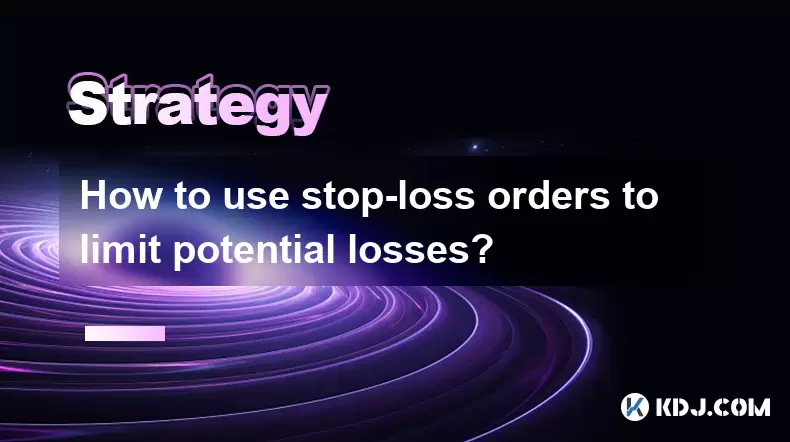
How to use stop-loss orders to limit potential losses?
Aug 08,2025 at 02:01pm
Understanding Stop-Loss Orders in Cryptocurrency TradingA stop-loss order is a risk management tool used by traders to automatically sell a cryptocurr...
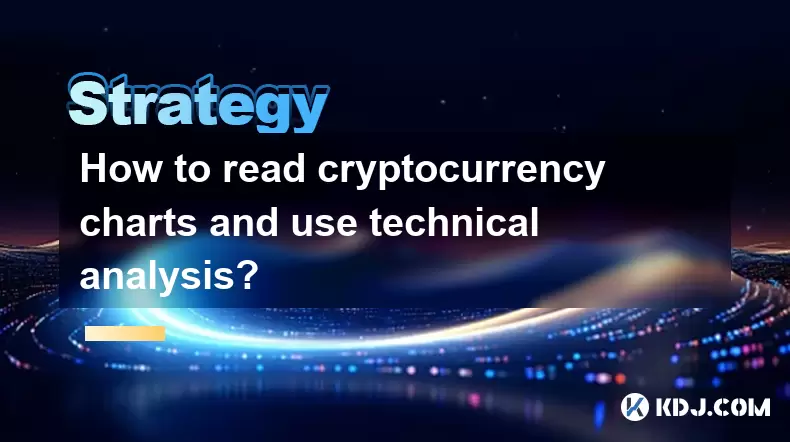
How to read cryptocurrency charts and use technical analysis?
Aug 08,2025 at 11:08am
Understanding the Basics of Cryptocurrency ChartsCryptocurrency charts are graphical representations of price movements over time. These charts are es...
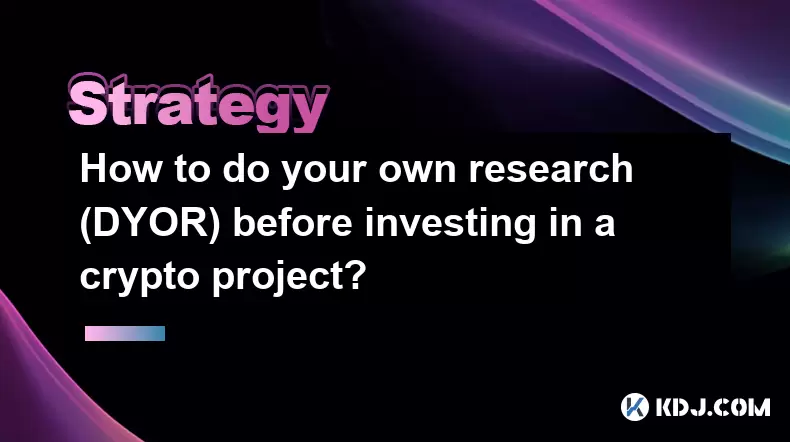
How to do your own research (DYOR) before investing in a crypto project?
Aug 08,2025 at 09:07pm
Understanding the Core Principles of DYOR in CryptocurrencyEngaging in due diligence before investing in any cryptocurrency project is essential to mi...
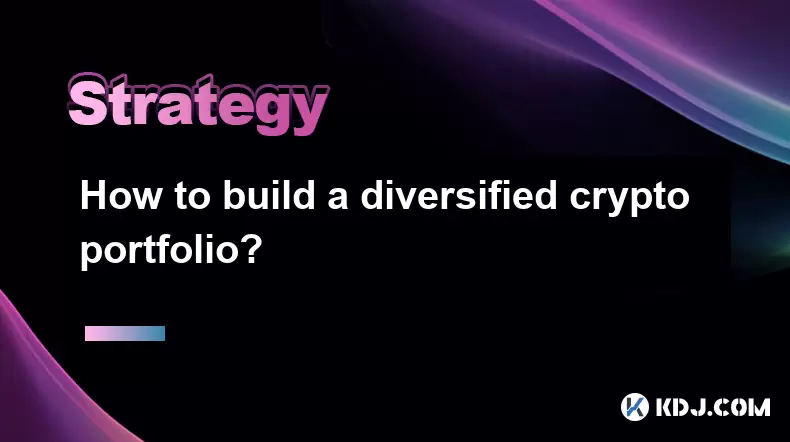
How to build a diversified crypto portfolio?
Aug 09,2025 at 12:21pm
Understanding the Importance of Diversification in CryptoDiversification in the cryptocurrency space is a strategy used to reduce risk by spreading in...

How to avoid common crypto investment mistakes?
Jul 13,2025 at 01:35am
Understanding the Risks of Crypto InvestmentInvesting in cryptocurrency can be highly rewarding, but it also comes with significant risks. One of the ...

What is a long-short crypto strategy?
Jul 15,2025 at 10:56am
Understanding the Basics of a Long-Short Crypto StrategyA long-short crypto strategy is an investment approach where traders simultaneously take long ...

How to use stop-loss orders to limit potential losses?
Aug 08,2025 at 02:01pm
Understanding Stop-Loss Orders in Cryptocurrency TradingA stop-loss order is a risk management tool used by traders to automatically sell a cryptocurr...

How to read cryptocurrency charts and use technical analysis?
Aug 08,2025 at 11:08am
Understanding the Basics of Cryptocurrency ChartsCryptocurrency charts are graphical representations of price movements over time. These charts are es...

How to do your own research (DYOR) before investing in a crypto project?
Aug 08,2025 at 09:07pm
Understanding the Core Principles of DYOR in CryptocurrencyEngaging in due diligence before investing in any cryptocurrency project is essential to mi...

How to build a diversified crypto portfolio?
Aug 09,2025 at 12:21pm
Understanding the Importance of Diversification in CryptoDiversification in the cryptocurrency space is a strategy used to reduce risk by spreading in...

How to avoid common crypto investment mistakes?
Jul 13,2025 at 01:35am
Understanding the Risks of Crypto InvestmentInvesting in cryptocurrency can be highly rewarding, but it also comes with significant risks. One of the ...

What is a long-short crypto strategy?
Jul 15,2025 at 10:56am
Understanding the Basics of a Long-Short Crypto StrategyA long-short crypto strategy is an investment approach where traders simultaneously take long ...
See all articles

























































































